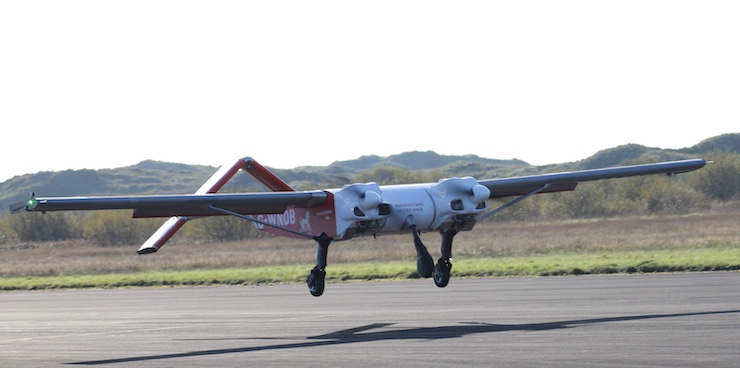Trial Shows Wild Bird Colonies Not Disturbed by Drones

© Windracers.com
One of the biggest concerns when it comes to integrating drones into shared airspace is the impact they will have on humans. As the push for broad drone use continues, developers of drone technology and policies need to ensure that these unmanned aerial vehicles will not pose any physical threat to people. What is often overlooked, however, is how drones will affect wildlife, especially protected vulnerable species. This concern was highlighted on October 24, 2024, when a large flock of white-tailed kites was roosting in San Luis Obispo, CA, at Meadow Park.
A drone was flown too close to the birds, which are protected under the Migratory Bird Act, causing a panic. The birds, which had spent nearly two weeks building their winter nests, scattered. Over the next few days, ornithologists—those who study birds—discovered that several of the birds were injured or deceased. “Drone activity can be incredibly dangerous to all wildlife. It can displace them. It can force potentially {sic} abandonment of a nest,” said Pacific Wildlife Care executive director Kristin Howland. “We just need to learn how to respect and live with wildlife.” Windracers, a United Kingdom-based drone manufacturer, teamed up with a world-renowned ornithologist to ensure that their drones would not disrupt wild bird colonies.
Windracers was founded in 2017 by Stephen Wright with the goal of providing low-cost humanitarian aid to isolated communities. The company developed a heavy-lift cargo drone that can cover great distances while meeting the economic constraints of humanitarian service. The drone is called the ULTRA Self-Flying Cargo Aircraft. It is a glider with a 32-foot wingspan and two quiet propellers at the front of the aircraft. It can travel more than 620 miles while supporting a cargo of 330 lbs. The drone has a cruising speed of roughly 88 mph, is operable during the day, night, and through foggy conditions, and can take off or land on ice, dirt, grass, or pavement.
Windracers holds the record for the most BVLOS (Beyond Visual Line Of Sight) flights in the United Kingdom and has partnered with numerous private, educational, and government entities to prove the ULTRA Self-Flying Cargo Aircraft’s strength as a low-cost cargo drone. To test how the drone would affect wildlife, Windracers headed to Scotland’s remote Orkney Islands with ornithologist Dr. Roy Armstrong and his colleague, ecologist Caitlin Henderson. Here, they had the drone complete multiple autonomous flights each week for several weeks between the Orkney Islands of North Ronaldsay, Eday, and Westray.
These islands are mostly uninhabited, home to only a few hundred people combined, making them ideal recipients of drone-delivered supplies. However, they support large colonies of seabirds. There are 32 different species of birds, such as cormorants, fulmars, guillemots, razorbills, kittiwakes, and gulls, that breed and nest on the islands, designating them as a Special Protection Area. The birds on these islands are accustomed to disturbances from grazing animals like sheep or the occasional manned air or water ferries that only approach designated shore spots. The birds had never been exposed to drones flying over the island, near their nesting sites.
Dr. Armstrong and Ms. Henderson observed that the birds showed no signs of distress from the drone. They were able to see the drone flying overhead, but it did not cause them to scatter. Additionally, the drone’s twin engines were quiet enough not to pose an auditory threat to the bird colonies. In fact, the birds were more likely to scatter due to a sheep grazing too close to where they happened to be perched. “The trials clearly demonstrated that there was no disturbance effect observed at the chick-rearing stage of a wide range of species,” Dr. Armstrong reported.
The trial was just the next step in Windracers’ goal of establishing broad drone deliveries to communities in need of resources. The experiment was part of the Sustainable Aviation Test Environment, one of the programs run through the UK Research and Innovation Future Flight Challenge, which aims to establish the UK as a leader in drone possibilities. “In continual advancement and improvement of ULTRA, Windracers is keen to understand any potential impacts from our flights on bird colonies and other wildlife in the areas where we operate,” said Windracers Chief Operation Officer, Rob Datson. “The findings of this study will no doubt be of reassurance to Orkney residents as well as the birdwatching community around the world.”
|